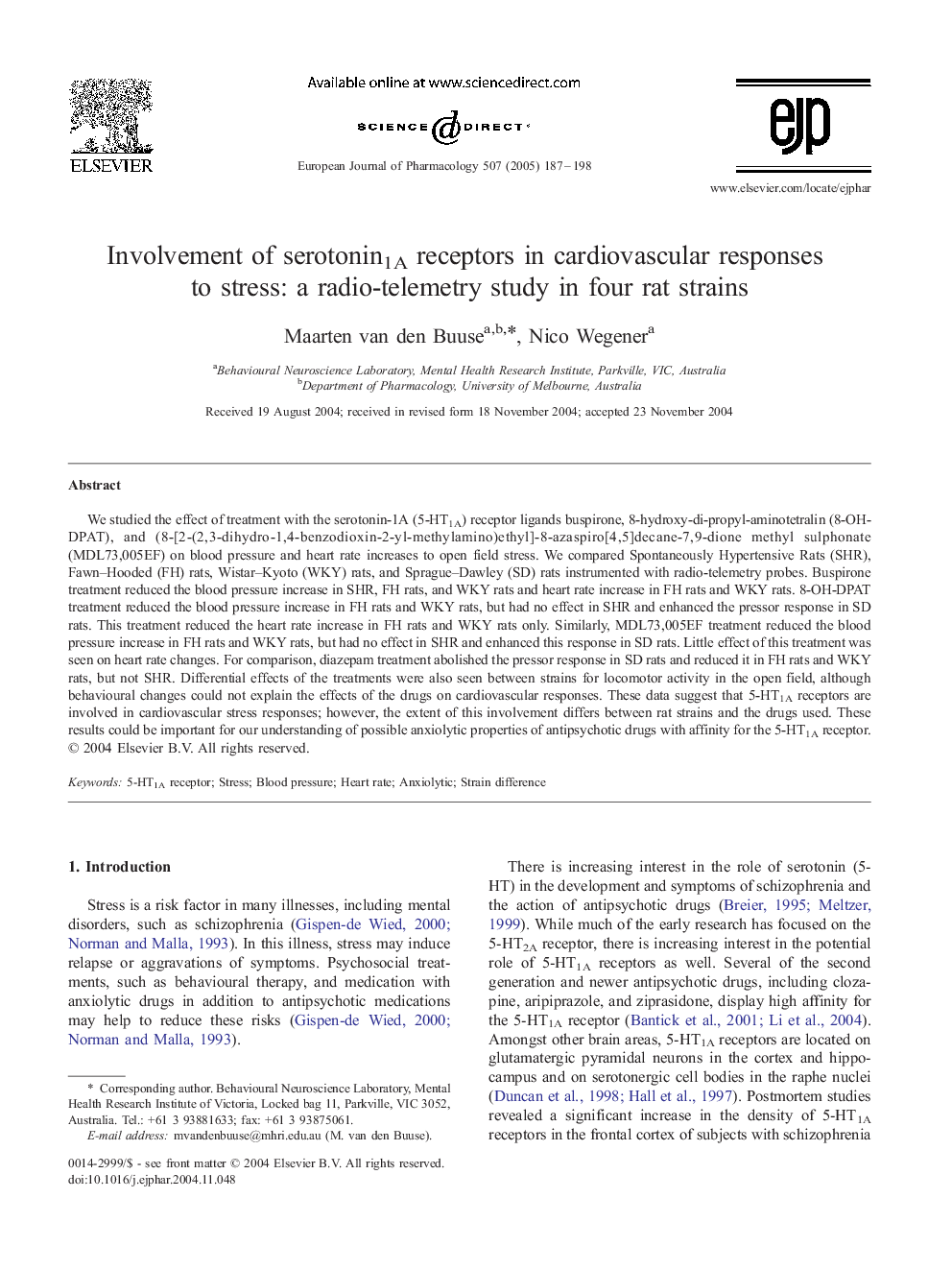| Article ID | Journal | Published Year | Pages | File Type |
|---|---|---|---|---|
| 9921571 | European Journal of Pharmacology | 2005 | 12 Pages |
Abstract
We studied the effect of treatment with the serotonin-1A (5-HT1A) receptor ligands buspirone, 8-hydroxy-di-propyl-aminotetralin (8-OH-DPAT), and (8-[2-(2,3-dihydro-1,4-benzodioxin-2-yl-methylamino)ethyl]-8-azaspiro[4,5]decane-7,9-dione methyl sulphonate (MDL73,005EF) on blood pressure and heart rate increases to open field stress. We compared Spontaneously Hypertensive Rats (SHR), Fawn-Hooded (FH) rats, Wistar-Kyoto (WKY) rats, and Sprague-Dawley (SD) rats instrumented with radio-telemetry probes. Buspirone treatment reduced the blood pressure increase in SHR, FH rats, and WKY rats and heart rate increase in FH rats and WKY rats. 8-OH-DPAT treatment reduced the blood pressure increase in FH rats and WKY rats, but had no effect in SHR and enhanced the pressor response in SD rats. This treatment reduced the heart rate increase in FH rats and WKY rats only. Similarly, MDL73,005EF treatment reduced the blood pressure increase in FH rats and WKY rats, but had no effect in SHR and enhanced this response in SD rats. Little effect of this treatment was seen on heart rate changes. For comparison, diazepam treatment abolished the pressor response in SD rats and reduced it in FH rats and WKY rats, but not SHR. Differential effects of the treatments were also seen between strains for locomotor activity in the open field, although behavioural changes could not explain the effects of the drugs on cardiovascular responses. These data suggest that 5-HT1A receptors are involved in cardiovascular stress responses; however, the extent of this involvement differs between rat strains and the drugs used. These results could be important for our understanding of possible anxiolytic properties of antipsychotic drugs with affinity for the 5-HT1A receptor.
Related Topics
Life Sciences
Neuroscience
Cellular and Molecular Neuroscience
Authors
Maarten van den Buuse, Nico Wegener,
